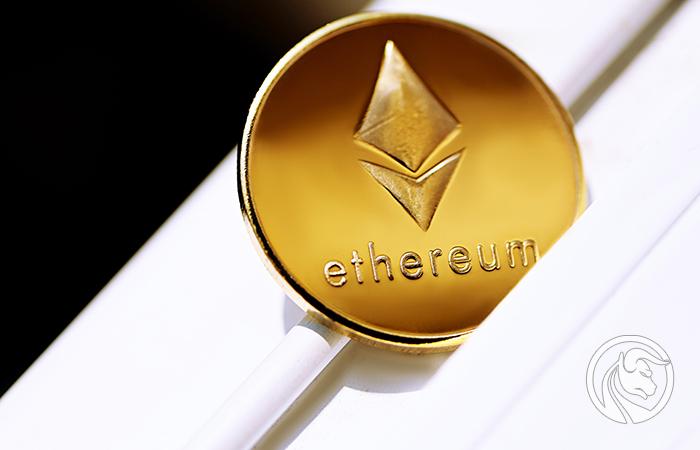What you should know about the "fusion" of the Ethereum network. The first tests are underway
In August, the network Ethereum goes from the protocol proof-of-work na proof-of-stake; this change is known as a merger. go), and its first public test will be tomorrow. The merger could turn out to be one of the most significant events in cryptocurrency history as it will impact the Ethereum network both technically and economically. Let's take a look at how the merger will transform the Ethereum network.
Since the publication of the first Ethereum White Paper in 2014, Ethereum developers have made it clear that they would ultimately want to implement the Ethereum protocol. proof-of-stake instead proof-of-workhowever, due to technical difficulties, this has not been possible so far. Currently, however, the transition of the Ethereum network from the protocol proof-of-work na proof-of-stake - referred to as "mergers" - is fast approaching. The first public fusion test will take place on June 8, which will be followed by seven other minor tests. The current Ropsten test network will carry out the merger on the same day. If the connection to the Ropsten network is successful, the Ethereum network will connect two other already existing test networks before the actual merger. Given this news and information from the Ethereum Foundation, there are indications that the merger will take place in August, provided testing goes well. As the merger will take place in the near future, let's discuss how it will transform the Ethereum network both technically and economically.
From diggers to stackers
The most significant modification will be the transition from the protocol proof-of-work na proof-of-stake, which will fundamentally change the method by which the network verifies transactions. Instead of the enormous computing power put at the disposal of the network by cryptocurrency miners, the owners of aether will verify the transaction. This means that they will have the ability to lock down ethers as collateral in order to be able to verify transactions - in other words, stacking the ethers they have. In return, they will receive transaction fees along with coverage of security costs. For now, as part of a financial incentive for miners, costs will be covered in the form of newly issued ethers, while later it will apply directly to the stackers due to the verification of the transaction. The main advantage of the protocol proof-of-stake in terms of security is that stakeholders remain under strict control. In the event that the network determines that a stacker has acted unethically - for example, it has tried to reverse a transaction - the network may take away some or all of its stacked ethers.
 About the author
About the author
Mads Eberhardt, Cryptocurrency Market Analyst, Sax Banks. Cryptocurrency Market Analyst at Saxo Bank. He gained experience as a trader at Bitcoin Suisse AG and founder http://BetterCoins.dk (website taken over by Coinify).
A more environmentally friendly solution
After implementing the protocol proof-of-stake, Ethereum network will reduce energy consumption by approximately 99,95%. To understand why this is happening, you need to re-examine the differences between consensus mechanisms. For the Ethereum network, a new block is now finalized approximately every 13 seconds. During these 13 seconds, each miner is struggling to be the one who finalizes the block. It uses computing power and therefore requires electricity. Ultimately, however, only one miner finalizes the block and verifies transactions, even though others have devoted enormous amounts of energy to the same block. As part of the protocol proof-of-stake, one validator is selected randomly to finalize the block based on the number of stacked ethers. This occurs before the block is created so that no other stacker tries to finalize the same block, ultimately reducing the power consumption of the Ethereum network by about 99,95%.
A better, fairer economy
Due to the drastic decrease in the amount of energy required to verify transactions on the Ethereum network, security costs can also decrease significantly. As part of the protocol proof-of-work the costs of securing the Ethereum network amount to approximately 5,4 million ETH per year. This means that 5,4 million new Ethers are emitted annually, up to the current supply of around 120 million Ethers to encourage miners to verify the transaction. At the time of the merger, security costs will drop to around 0,5 million ETH per year in compensation for stackers. This is a significant reduction in ethereum inflation that could even lead to deflation as the transaction costs paid are predicted to exceed Ethereum hedging costs. With regard to transaction fees, a significant proportion of them will be "burned" and thus removed from supply. Over time, this can create a supply shock as the market is used to absorbing 5,4 million newly issued Ethers per year, while suddenly only around 0,5 million Ethers are to be emitted.
It could also be argued that the protocol proof-of-stake is more fair to ethereum holders economically than proof-of-work. In the case of the protocol proof-of-work one can de facto verify transactions without the need for ethers, as long as you invest heavily in processing power. This means ETH holders are not compensated for inflation or transaction fees, which they cause dilution of the cryptocurrency. In the case of the protocol proof-of-stake holders are rewarded fairly with inflation and transaction fees.
However, it is not a much more scalable solution
The merger as such will not make the Ethereum network much more scalable. If successful, will reduce the block creation time from approximately 13 seconds to 12 seconds while keeping the same block size. Ultimately, this will increase your trading efficiency by 7,5%, but not by much more. According to the current schedule, the scalability of the Ethereum network will not improve until 2023. Ultimately, shard chains (fragmentation) will be implemented around this time, which will significantly improve the scalability of the Ethereum network, and possibly require even less hardware to verify transactions.
ETH 12,8 million to be unlocked later
On December 1, 2020, the version of the Ethereum network using the protocol was launched proof-of-stake, known as Beacon Chain. Beacon Chain is the version that will be realistically connected to the protocol-based Ethereum network proof-of-work at the time of the merger. From the moment it starts up, Beacon Chain finalizes empty blocks to ensure that it works as intended. For the verification of these blocks, ethereum holders were able to stack ethers as part of the Beacon Chain. Currently, the Beacon Chain stocks over 10% of the total supply of Ethers - approximately 12,8 million ETH.
However, by stacking ethers within the Beacon Chain, these ethers were blocked. Originally, it was planned to unblock stacked ethers at the time of the merger, but to simplify the merger process technically, the developers of the Ethereum network decided not to unlock stacked funds by this date. Unblocking will probably take place 6 months after the merger and will cover the amount of 12,8 million ETH and ethers stacked at a later date. During these months, funds will also be blocked to cover the costs of security and transaction fees for stackers. This means that - presumably by next year - no newly issued ETs or transaction fees are expected to go into circulation, potentially reducing sales pressure. On the other hand, when stacked aethers are unblocked, the amount of which can even exceed 15 million ETH, it can exert a strong pressure on sales.
More of the same
The merger will not affect the Ethereum network in any other significant way. First, it is not expected to affect ETH holders or require any kind of activity from them. The connection will be made transparent to ETH holders. Second, it should not affect tokens or affect decentralized applications currently using ethereum. This means that tokens and smart contracts in the Ethereum network will work as before the merger.
Although the developers of the Ethereum network have been working on the merger for years, the merger may fail or be further delayed. As with all other aspects of the cryptocurrency market, there are simply no guarantees.






















![Forex Club – Tax 9 – Settle tax on a foreign broker [Download the Application] Forex Club - Tax 9](https://forexclub.pl/wp-content/uploads/2024/02/Forex-Club-Podatek-9-184x120.jpg?v=1709046278)
![Trading View platform – solutions tailored to the needs of traders [Review] trading view review](https://forexclub.pl/wp-content/uploads/2024/03/trading-view-recenzja-184x120.jpg?v=1709558918)
![How to connect your FP Markets account to the Trading View platform [Guide] fp markets trading view](https://forexclub.pl/wp-content/uploads/2024/02/fp-markets-trading-view-184x120.jpg?v=1708677291)
![CRB index – one of the popular commodity market benchmarks [Guide] crb index](https://forexclub.pl/wp-content/uploads/2024/05/indeks-crb-184x120.jpg?v=1715055656)
![How to invest in ChatGPT and AI? Stocks and ETFs [Guide] how to invest in chatgpt and artificial intelligence](https://forexclub.pl/wp-content/uploads/2023/02/jak-inwestowac-w-chatgpt-i-sztuczna-inteligencje-184x120.jpg?v=1676364263)







![Izabela Górecka – “Success on the market depends not only on knowledge, but also on emotional stability” [Interview] Izabela Górecka - interview](https://forexclub.pl/wp-content/uploads/2024/04/Izabela-Gorecka-wywiad-184x120.jpg?v=1713870578)
![WeWork – the anatomy of the collapse of a company valued at $47 billion [WeWork, part II] wework bankruptcy story](https://forexclub.pl/wp-content/uploads/2024/04/wework-bankructwo-historia-184x120.jpg?v=1711729561)
![Adam Neumann – the man who screwed up Softbank [WeWork, part AND] adam neumann wework](https://forexclub.pl/wp-content/uploads/2024/04/adam-neumann-wework-184x120.jpg?v=1711728724)
![The most common mistakes of a beginner trader - Mr Yogi [VIDEO] Scalping - The most common mistakes of a beginner trader - VIDEO](https://forexclub.pl/wp-content/uploads/2024/03/Scalping-Najczestsze-bledy-poczatkujacego-tradera-VIDEO-184x120.jpg?v=1711601376)
![Learning patience: No position is also a position - Mr Yogi [VIDEO] Scalping - Learning patience - No position is also a position - VIDEO](https://forexclub.pl/wp-content/uploads/2024/03/Scalping-Nauka-cierpliwosci-Brak-pozycji-to-tez-pozycja-VIDEO-184x120.jpg?v=1710999249)
![When to exit a position and how to minimize losses - Mr Yogi [VIDEO] Scalping - When to exit a position and how to minimize losses - VIDEO](https://forexclub.pl/wp-content/uploads/2024/03/Scalping-Kiedy-wyjsc-z-pozycji-i-jak-minimalizowac-straty-VIDEO-184x120.jpg?v=1710336731)

















